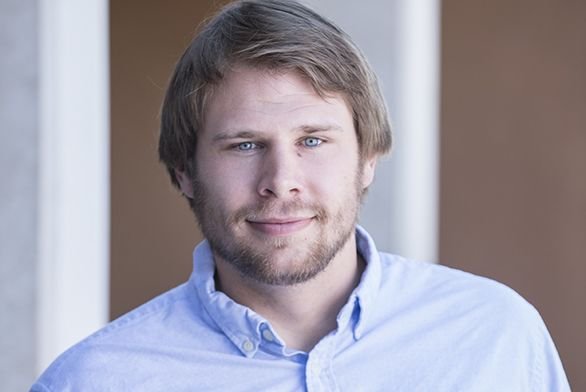The Power of Alumni Mentorship
November 14, 2017 | By Eve Tolpa

Terrance (T.J.) Schaub (SF18) had a lot of support in landing his summer 2017 Ariel Internship with Los Alamos National Laboratory.
That paid internship, funded by St. John’s donor dollars, afforded him the time and space to pursue his project, entitled “Sparse Coding for 3D Scene Reconstruction and Magnetic Fusion,” which involved developing a new form of data analysis for thermal magnetic fusion.
But another piece of the puzzle fell into place through a different channel: an alumni mentor.
Schaub was introduced to Sunny Hills (SF78) at Homecoming when he was a sophomore in Annapolis, and the two developed a friendship. “We talk every week or every other week,” says Schaub. “It’s almost a dialectic, like a seminar or conversation.”
Hills is a certified life coach who brings that particular perspective to his conversations with Schaub, which range from personal to professional. Schaub cites the types of questions they address together: “What’s your goal? Where do you want to go? Who do you think you should talk to this week?”
Hills’ encouragement, says Schaub, was essential in securing the LANL internship. Schaub was not deterred when, for example, he encountered organizations that didn’t see his skill set as a fit. “My relationship with Sunny helped me a lot in staying confident and persistent,” he says.
Once at the labs, a separate set of skills kicked in, ones honed at St. John’s. Schaub worked closely with physicists in the subatomic particles division, as well as neuroscientists and computer programmers. Though he began his internship with limited knowledge of computer science, his education allowed him to fill in the gaps.
“I read a few different papers on [the] software but needed to learn some new mathematics,” Schaub says. “It had to be put all together, and that’s the thing St. John’s helped me with. I’m used to bringing multidisciplinary fields together. The technical abilities and content were out there. Through persistence, I was able to do independent research.”
By connecting different ideas across a range of specialities—as well as directing his own education through reading and asking questions—Schaub came up with a new way of approaching a problem.
Dr. Zhehui (Jeff) Wang, who oversaw the internship, wrote in his mentor evaluation: “Considering the fact that T.J. has had essentially zero exposure to either the coding techniques or magnetic fusion, his progress is quite impressive ... We still have work to do towards publishable results for this work, but T.J. already convinced me that this is the right approach to be pursued further.” Wang added that he was “extremely impressed” with Schaub’s “self-learning ability [and] meticulous writing skills.”
In that last aspect of the internship, the value of a St. John’s education became especially clear to Schaub. He found that science writing is often directed to a very narrow section of the population, a phenomenon that solidified his own commitment to communicating with as broad an audience as possible. “If you can’t explain [something] to other people, you realize you don’t understand it as well as you thought,” he says.
Right now Hills is helping Schaub explore graduate school, where he plans to pursue physics and computer science. In his future studies, Schaub intends to continue using the St. John’s approach, which relates science to politics, philosophy, and ethics. It is through engaging in the Program, he says, that “you start to see a kind of global conversation amongst scientists,” one that encourages thoughtful contributions to society.

